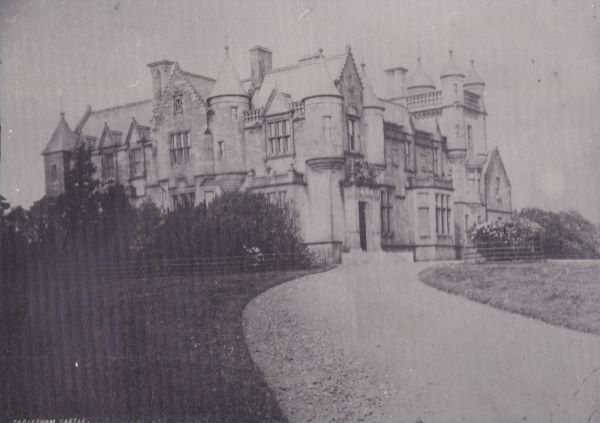

Mansion houses in Eaglesham
Mansion houses in Eaglesham
Eaglesham House
Eaglesham House or ‘Eaglesham Castle’ as it was known locally, was built in 1859-60 by the Gilmour brothers. James and Allan Gilmour had bought the estate of Eaglesham from the Earl of Eglinton in 1844. Allan Gilmour had been a founder and partner in the firm of Pollok and Gilmour, ship owners and timber importers until retiring in 1839.
The mansion was designed by David Bryce of Edinburgh in the Scots baronial style, with a square tower as the dominating feature. It had pitched roofs, crow-stepped gables and turrets. In the grounds of the mansion house there were offices, gardens, two lodge houses, parks and plantations.

Unfortunately, this grand mansion was badly damaged by fire in 1954, and was not rebuilt, and until 1959 its ground were used to grow and dry grass. In later years the Eaglesham House Estate was bought by the Polnoon Estate Company, although the coach house continued to be occupied until 1982 .
In 1984 planning permission was granted to demolish the remainder of the house and build the Linn Products factory on the site. This building was designed by distinguished modern architect Richard Rogers.
Polnoon Lodge
Polnoon Lodge was originally a hunting lodge of the Earls of Eglinton. It was built around 1733 by the 9th Earl, and renovated by the 12th Earl sometime around the 1790s. When the Gilmour brothers Allan and James bought the Eaglesham Estate from the 13th Earl, they lived in the lodge until they moved to Eaglesham Mansion House, which they had built in 1859/60.

In the 1920s the lodge became a temperance hotel and remained as such until 1957 when it was listed in the Valuation Rolls simply as a hotel.
The sale catalogue of Eaglesham Estate for 1927 describes Polnoon Lodge when a Temperance Hotel, as containing an entrance hall, two sitting rooms, dining room, drawing room, lavatory, kitchen, pantry, scullery, coal house and two bedrooms on the ground floor, with six bedrooms, a drawing room, a boxroom and a bathroom on the first floor, and two attic bedrooms on the second floor.
After the hotel closed in 1960 it lay neglected for a number of years until Renfrew County Council restored it and used it to provide housing accommodation for elderly people. The restoration work won a Civic Trust Award in 1971.
